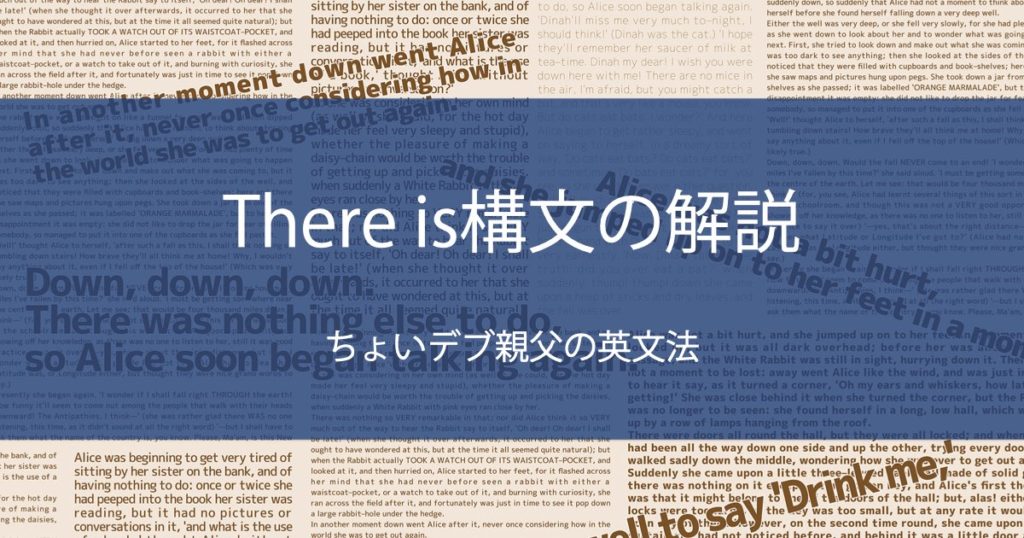
1.There is 〜とは?
There is 〜は、「…に〜がある」という意味です。非常に使いやすい構文なので、必ず覚えて下さい。
2.There is 〜の英作文
1 肯定文
There is ( are ) +物+場所
意味: 「…(場所)に〜(物)があります」
例文:
There is a book on the desk.
(机の上に本があります。)
過去形にする場合は be動詞を過去形にします。be動詞の過去形があいまいな人は >> be動詞過去形のページ もチェックしてみてくださいね。
例文:
There was a cat under the table.
(テーブルの下に猫がいました。)
>> 名詞が複数形 になる場合は、be動詞が are なることにご注意ください。
例文:
There are some books on the desk.
(机の上に数冊かの本があります。)
名詞が >> 不可算名詞 の場合は is ( was ) でOKです。
例文:
There is a little coffee in the cup.
(コップに少しコーヒーがあります。)
2 否定文
There is ( are ) not +物+場所
意味: 「…(場所)に〜(物)がありません」
>> be動詞の文 なので、否定文は be動詞の直後に not をつけます。
[現在形]
There is not a book on the desk.
(机の上に本がありません。)
[過去形]
There was not a cat under the table.
(テーブルの下に猫がいませんでした。)
[複数形]
There are not any books on the desk.
(机の上に一冊も本がありません。)
※some を any にすることを忘れないで下さい。
3 疑問文
Is ( Are ) there +物+場所
意味: 「…(場所)に〜(物)がありません」
>> be動詞の文 なので、疑問文は be動詞を文頭に持っていきます。文末の ? も忘れないで下さいね。
[現在形]
Is there a book on the desk?
(机の上に本がありますか。)
[過去形]
Was there a cat under the table?
(テーブルの下に猫がいましたか。)
[複数形]
Are there any books on the desk?
(机の上に何冊か本がありますか。)
※some を any にすることを忘れないで下さい。
「はい」の場合
Yes, there is ( are ).
「いいえ」の場合
No, there is ( are ) not.
答え方は単純で、状況に応じて be動詞を変化すればOKです。
[現在形]
Is there a book on the desk?
(机の上に本がありますか。)
[答え]
Yes, there is.
(はい、あります。)
No, there is not.
(いいえ、ありません。)
[過去形]
Was there a cat under the table?
(テーブルの下に猫がいましたか。)
[答え]
Yes, there was
(はい、いました。)
No, there was not.
(いいえ、いませんでした。)
[複数形]
Are there any books on the desk?
(机の上に何冊か本がありますか。)
[答え]
Yes, there are.
(はい、あります。)
No, there are not.
(いいえ、ありません。)
